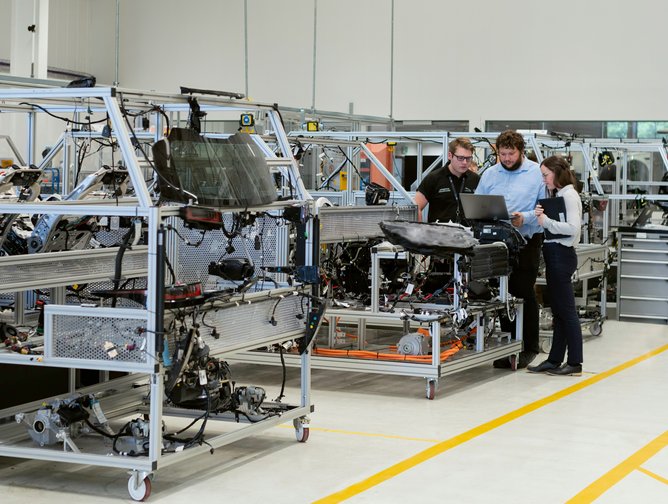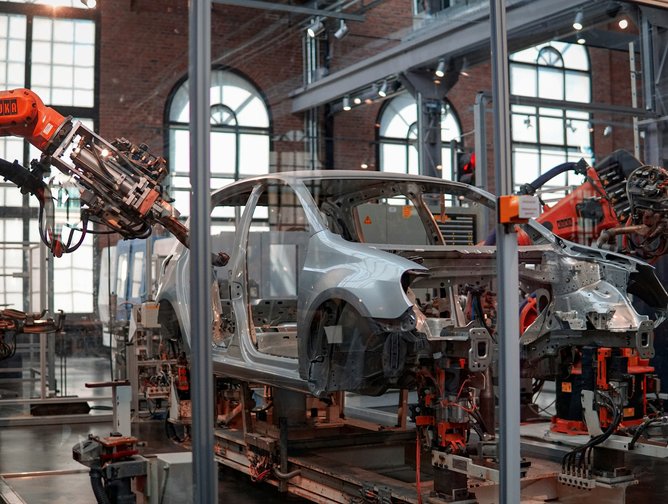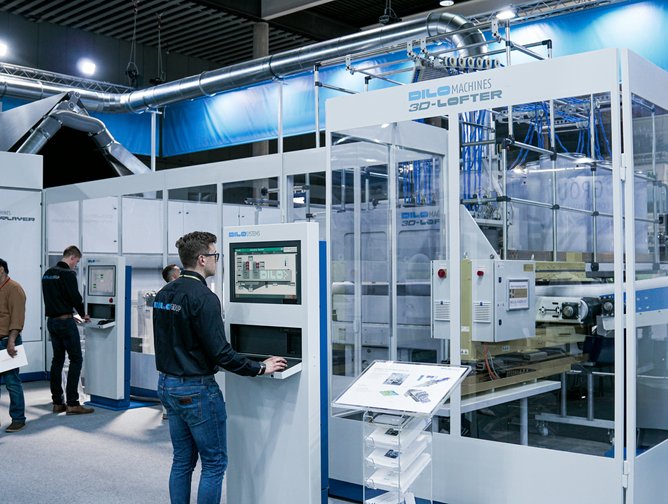Gartner: Making Smart Manufacturing Smarter

Smart manufacturing is about making supply chain manufacturing, as the title implies, smarter. It’s about the approach, not just the technology, ensuring that digital solutions serve manufacturers' business aims and corporate responsibilities in strategic, intelligent and holistic ways.
Gartner’s new whitepaper, ‘Elevate and Expand Your Smart Manufacturing Strategy’ gives critical advice to the 91% of supply chain leaders with a smart manufacturing strategy, driven by a goal to help them overcome long-term challenges.
These manufacturers must understand the concerns relating to data integrity, technology security and commercial availability. They must also align the plans and benefits of smart manufacturing to work with both supply chain and factory operations.
Before businesses can explore Garter’s recommended actions, they must address manufacturers' mindsets and experiences. What do they report about the challenges involved with smart manufacturing strategies? Garter’s whitepaper reached out to respondents to find out.
Achieving economic benefit
Manufacturers on the whole are seeing economic returns with smart manufacturing.
21% reported achieving economic benefit posed no challenge, and 47% of manufacturers felt it only posed a limited challenge. Only 33% agreed that this was a substantial challenge.
This doesn’t mean the short and long-term costs involved don’t cause any operational and decision-making strain.
Cost
The biggest percentage for providing substantial challenges at 41%, cost is a big concern to manufacturers. Only 16% identified cost as posing no challenge, with most manufacturers in the middle at 42%.
Capability to scale across multiple sites
The scalability of smart factory solutions came in as the second highest challenge respondents identified as substantial, at 39%.
40% responded it posed a limited challenge, with a quarter of respondents saying it posed no challenge at all.
Technology
Most respondents, 44%, identified technology as posing limited challenges. Meanwhile, 38% felt it posed a substantial challenge, with only 18% saying it posed none at all.
Skills
The second highest answer for posing no challenges at 22%, the majority of respondents felt this posed a limited challenge at 46%. The remaining 32% felt it posed significant challenges.
Integration with other supply chain functions
The highest entry for posing limited challenges at 54%. Only 15%, the lowest number of respondents in the survey however feel it poses no challenge. The rest, 31%, say it poses significant challenges.
Competition against other projects
Most manufacturers report this poses limited challenges at 49%, the second highest for this answer. 33% say it poses significant challenges, while 18% say it poses none at all.
Cultural resistance
More manufacturers said cultural resistance wasn't a major challenge to smart manufacturing than any other challenge, at 32%. This speaks to a growing landscape of accessible smart factory solutions. Only 27% said it posed a substantial challenge, with a majority of 40% saying it posed a limited challenge.
Speaking on Gartner’s top supply chain technology trends, Simon Jacobson, VP Analyst, Gartner, said: “Organizations must realize — and quickly — that smart manufacturing requires synchronizing activities for capability building, capability enablement and empowering people. It’s not just about putting in place the right technology."
Going beyond implementing technology means doing so with intelligence and purpose. Which is why Gartner outlines three critical decisions manufacturers can make to make their smart manufacturing strategy smarter.
03: Align smart manufacturing strategy with supply chain performance objectives
Gartner says that what is missing from technological implementation in today’s manufacturing is governance, establishing how as capabilities mature the smart manufacturing factory will mature with it.
This maturing process depends upon an understanding of the factory and supply chain as being on the same benefits-based continuum. These benefits differ in their ability to scale and the degree of transparency they can reach, which is enabled by integration and connectivity.
What Gartner’s research makes clear is that the relationship between transparency and scalability is inverse- if something is easy to scale, it’s probably not very transparent, and if something is highly transparent, it’s probably hard to scale.
For example, safety is low on the degree of transparency but is easy to scale, remaining very much on the factory end of the continuum. Demand forecasting accuracy, which is involved prominently with the supply chain, has a high level of transparency enabled by integration but is difficult to scale.
Gartner suggests aligning these outcomes to broader, top-down-driven supply chain objectives and utilising continuous improvement techniques to make progress against them.

02: Enable smart manufacturing success through supply chain convergence
The Gartner whitepaper defines supply chain convergence as a ‘synchronisation of processes, subprocesses and activities across the supply chain’. The departmental and functional barriers that exist between organisations must be broken down to do this.
In the realm of smart manufacturing, this requires evaluation of processes involved in sourcing and planning, customer service and logistics, and developing cross-functional performance metrics which can assess the total value generated for the customer.

01: Segment smart manufacturing technology investments
Gartner’s whitepaper shows dramatically different levels of investment short and long-term investment in emerging technologies. The biggest technology respondents were currently using was the cloud, with over 57% currently using the technology. After this were workflows and dashboards at similar percentages, followed by the Internet Of Things at 38%.
While a smaller percentage of manufacturers are currently using smart robots, at 26%, 28% of them are currently implementing and 37% plan to invest in the next two years, the biggest percentage for that answer.
Manufacturers are mostly implementing rather than using cognitive advisors at augmented reality technology, with 35% currently implementing and 25% already using it. 27% intend to invest in the next two years, with 13% having no plans- on the higher end for this category.
The biggest technology manufacturers haven’t invested in yet is drones, with 26% having no plans to invest in the next two years and only 29% planning to invest in the next two years.
The technology that has been implemented the least was digital twins. Only 17% of manufacturers are currently using it, with 27% working on implementation. It’s clear though there is sizable interest in the technology, as 32%- the highest for this answer after smart robots- plan to invest in the next two years.
Gartner recommends segmenting all technology investments connected to smart factories into two categories: those that will foster future innovation and process capabilities and those that will enhance core operations.
It advises manufacturers to be ready to spend on integration. Acquiring an edge device isn’t costly, but integrating that new data source with associated process changes, workflows and applications will require further investment.

The challenges Gartner identifies in their whitepaper, align with the wider technology trends for 2024 discussed by Chris Howard, Gartner Distinguished VP Analyst at the Gartner IT symposium in October of last year.
“We distilled it down to ten trends, and the way that we’ve organised them here is down into three different neighbourhoods or themes,” he said.
“So protecting the investment you’ve already made, so the things that you’ve been investing in like machine learning like natural language, those things you’ve actually been doing for some time.”
He then went on to identify the second theme as a rapid increase in engineering, aka ‘the rise of the builders’:
“We also see the rise of the builders. There's been a ramp-up in software engineering for quite some time where people are building more things because they have to and the tools are getting better."
The final piece of the puzzle according to Chris? Delivering value. “But then of course, part of climbing out of the trough of disillusionment is when you start to actually deliver value from those things that you’ve done.” he said.
Gartner’s whitepaper will help manufacturers do just that, by underlining the strategic importance of holistically integrating smart manufacturing solutions across both factory operations and the broader supply chain.
******
Make sure you check out the latest edition of Manufacturing Digital and also sign up to our global conference series - Procurement & Supply Chain 2024 & Sustainability LIVE 2024
******
Manufacturing Digital is a BizClik brand.
- A Truly Unlimited Training Reality, With AWS & DeloitteSmart Manufacturing
- Lifetime of Achievement: Roland BuschSmart Manufacturing
- Accenture & Purdue Build Online Smart Manufacturing AcademyProduction & Operations
- WEF, Kearney Report: Manufacturing’s Rhetoric vs RealitiesProduction & Operations


